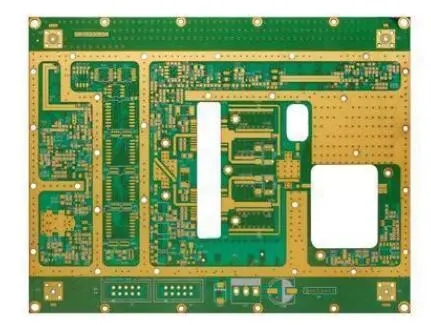What are the types of high-frequency PCB material?
With the continuous advancement of science and technology, high-frequency circuit boards (PCBs) are increasingly used in modern electronic fields, especially in wireless communications, radar systems, satellite navigation and other fields. The core of a high-frequency circuit board lies in the selection of its board materials. Suitable board materials can significantly improve the performance of the circuit board. So, what are the types of high-frequency PCB boards? This article will give you an in-depth understanding and help you make accurate selection.
Types of pcb high frequency boards
Polytetrafluoroethylene (PTFE) sheet
PTFE sheet is one of the most commonly used sheets in high-frequency circuit boards. Its notable feature is its extremely low dielectric constant and loss tangent. This means that the signal loss during transmission is extremely low, ensuring signal stability and transmission quality. In addition, PTFE sheets also have good thermal stability and chemical corrosion resistance, and are suitable for various harsh environments.
Polyimide (PI) sheet
PI sheets also have excellent electrical properties and thermal stability, making them a good choice for high-frequency circuits. Its low dielectric constant and loss tangent help reduce energy loss during signal transmission. At the same time, PI sheets also have excellent mechanical properties and weather resistance, and can cope with various complex application scenarios.
ceramic plate
Ceramic sheets perform well in high-frequency and high-power circuits due to their high thermal conductivity and high temperature resistance. Although it is more expensive and difficult to process, the excellent properties of ceramic sheets make them ideal for specific applications. For example, in high-temperature, high-power radar systems, ceramic plates can ensure the stable operation of circuit boards.
How to accurately select
Application scenarios
Different application scenarios have different performance requirements for high-frequency boards. For example, wireless communication systems pay more attention to signal transmission quality and stability, while radar systems have higher requirements for the thermal stability and high temperature resistance of plates.
Electrical properties
Electrical performance parameters such as dielectric constant and loss tangent are key factors affecting the performance of high-frequency circuit boards. We need to choose the appropriate board material according to specific needs to ensure fast signal transmission and low loss.
Thermal stability and chemical resistance
For circuit boards that need to work in high temperatures or harsh environments for a long time, we need to choose boards with good thermal stability and chemical resistance.
Cost and processing difficulty
When selecting plates, we also need to consider cost and processing difficulty. Although some high-performance boards have superior performance, they are more costly or difficult to process and may not be suitable for all application scenarios.
There are many types of PCB high-frequency boards, and each board has its own unique performance and applicable scenarios. By having an in-depth understanding of the characteristics and performance parameters of various boards, we can select the appropriate board according to specific needs to ensure the performance and stability of the circuit board.



